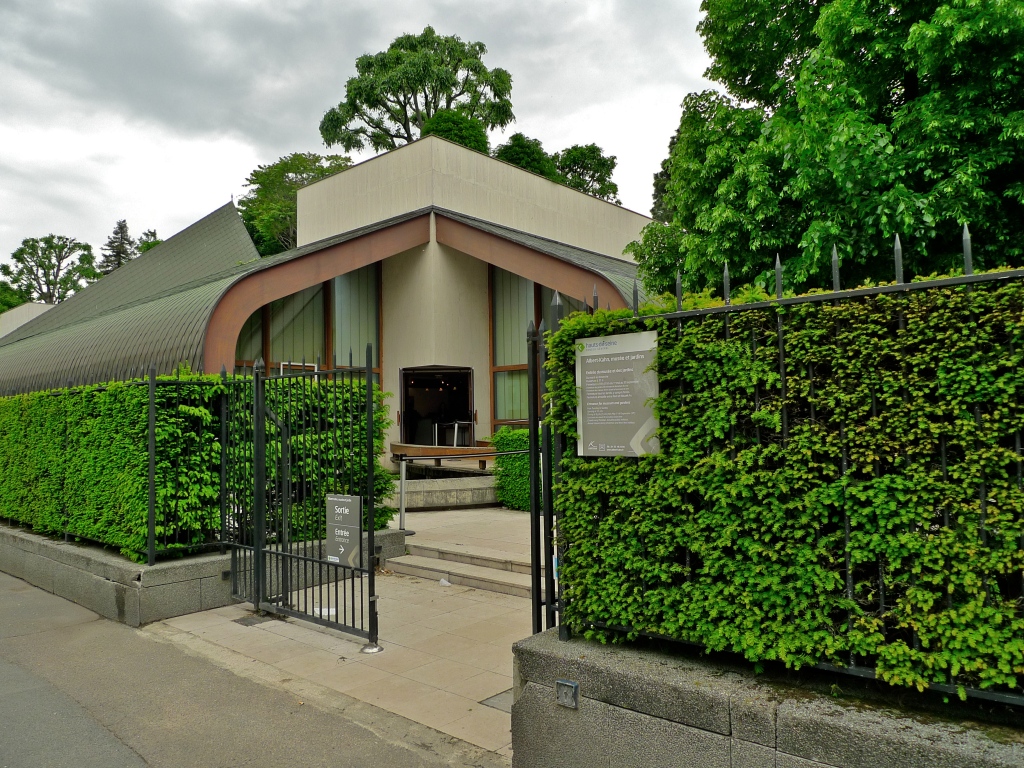Albert Kahn Musée et Jardin
THE ALBERT KAHN MUSEUM AND GARDENS are located on the outskirts of Paris in Boulogne-Billancourt conveniently close to the Métro station Boulogne – Pont de Saint-Cloud (Line 10) and the tram stop Parc de Saint-Cloud on tram line T2.
Taking advantage of the sunshine that, for the most part, seems to have eluded us this year, I went to take a look.
The museum and the gardens, now owned by the Conseil Général des Hauts-de-Seine, are the legacy of the French banker and philanthropist, Albert Kahn (1860 – 1940).
Albert Kahn was born in 1860 in Marmoutier, in the Bas-Rhin region of France. At the age of sixteen he went to Paris to work as a junior clerk in the Goudchaux Frères bank where he eventually became a senior partner. In 1898 he set up his own bank.
Kahn believed that knowledge of foreign societies and cultures encouraged respect and peaceful relations between peoples and so, following this theme and using his considerable wealth, he set up the series of bursaries, or travelling scholarships, he called Autour du Monde – “Around the World”. He also founded the Chair of Human Geography at the Collège de France, plus the first centre for preventive medicine, a biology laboratory and two forums for discussion and research, the Société Autour du Monde, and the National Committee for Social and Political Studies.
In 1893 Kahn acquired a large property in Boulogne-Billancourt, where he established a unique garden containing a variety of garden styles including French, English and Japanese.
In 1909, Kahn travelled to Japan on business and returned with a collection of photographs of the journey. This prompted him to begin a project collecting a photographic record of the entire planet. He appointed Jean Brunhes as the project director, and sent photographers to every continent to record images of the planet using the first colour photography, autochrome plates, and early cinematography. Between 1909 and 1931 they collected 72,000 colour photographs and 183,000 metres of film. These form a unique historical record of 50 countries, known as The Archives of the Planet, now housed in the Albert Kahn museum.
The stock market crash of October 1929 dealt a fatal blow to Kahn’s wealth and his plans. His property was confiscated and in 1936, the Prefecture of the Seine acquired the Boulogne estate, although Kahn was allowed the use of it until his death in November 1940. In 1968, the Conseil Général des Hauts-de-Seine was granted ownership of the site and collections.
Eventually the four hectares (eight acres) of gardens were restored and a museum was set up by the Conseil Général des Hauts-de-Seine to exhibit Kahn’s collection of images.
Sounds of the Albert-Kahn Musée et Jardin:
The Albert Kahn garden comprises a collection of gardens of different styles.
There is the Japanese garden complete with an old Japanese village filled with temples, lanterns, stone edged paths, and the contemporary Japanese garden, with azaleas, and streams crossed by stone or timber bridges.
There’s a formal French garden, with a large greenhouse complete with palms and tropical plants, an orchard and a rose garden.
The English garden was a particular delight to me, with its green grass, rocks and a cottage.
Then, a forest of Blue Atlas cedars and Colorado spruces, whose low branches screen a small lily pond surrounded by a wild meadow. After crossing the meadow and passing through a group of slender birches, paths lead to a forest of conifers planted on steep, rocky soil, a reproduction of the Vosges Mountains near Kahn’s birthplace.
Change is afoot for the Albert Kahn museum. The Japanese architect, Kengo Kuma, won the competition for a completely new museum building. Work is due to start in 2015 and is expected to be completed in 2017.
Albert Kahn, museum and gardens: 10-14, rue du Port, 92100 Boulogne-Billancourt





















